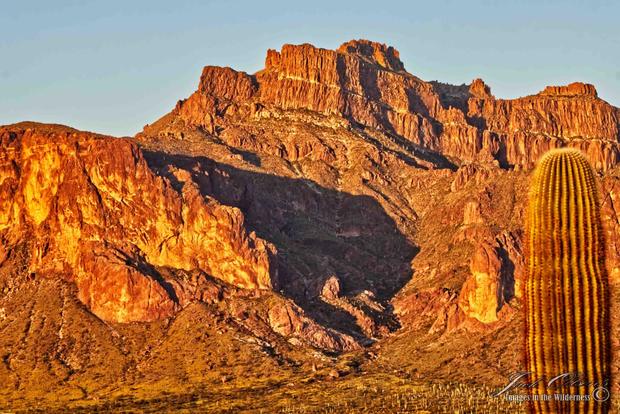The elusive "Cougar's Shadow" only emerges twice a year – and now is your last chance to see it until fall
An "elusive" beast is emerging for a limited time, offering viewers a rare glimpse of a spectacle in Arizona's mountains. It's not dangerous, but finding the legendary mountain entity can be difficult.
It's known as "The Cougar's Shadow" – a natural phenomenon in the state's Superstition Mountains that only appears twice a year, during the equinoxes. The spring equinox occurred late Tuesday night – a rare event itself as it's earlier than usual – offering a small window of opportunity to see the cougar-shaped shadow that cascades over Apache Junction.
The spectacle draws in people from across the country, including Ralph Prosser.
"I'm hoping to see the elusive cat," Posser told CBS affiliate KPHO.
Longtime "Cougar's Shadow" photographer Jack Olson told the station that the shadow looks like "a cougar chasing its prey down into the bottom on the canyon."
"This is my seventh year going out there," he said. "My wife thinks I'm crazy."
Olson has been posting updates about this year's big cat emergence on Facebook, saying on March 18 that while the shadow was already visible, it still "needs at least another week or more to become better defined."
According to Visit Mesa, the cougar appears the third week of March and the best viewing spot is in Apache Junction at 13th Avenue and Goldfield Road.
"Timing is critical," the group says, with the last 30 minutes before the official sunset being the "prime time for viewing."
Arizona's Superstition Mountains, the home of the rare shadow event, are the result of intense volcanic activity over a long period of time, according to Arizona State Parks. The state says that around 25 million years ago, volcanoes across the area emitted 2,500 cubic miles of ash and lava and that eventually, the volcanoes collapsed into their magma chambers.
"A subsequent up-thrust of thick lava within the largest of these calderas and the forces of erosion have created the Superstition formations that we see at the park today," the state parks website says. "...While hiking in the Superstitions, one can sometimes hear rumblings similar to rolling thunder. Geologists say this results from seismic activity resonated by the canyon walls. This could explain the origin of the Apache legend that these mountains are the home of the thunder gods."





